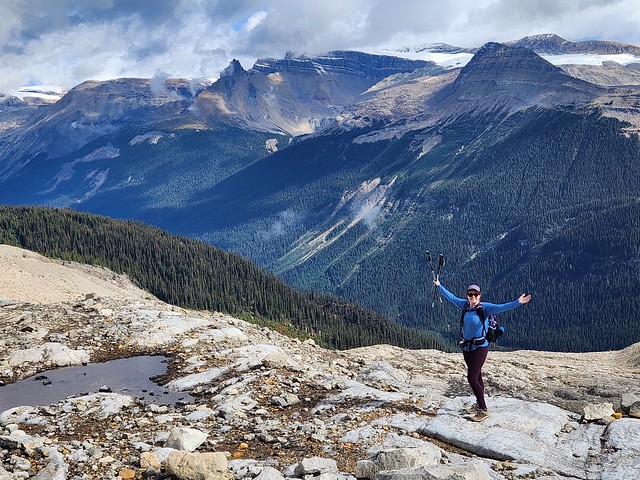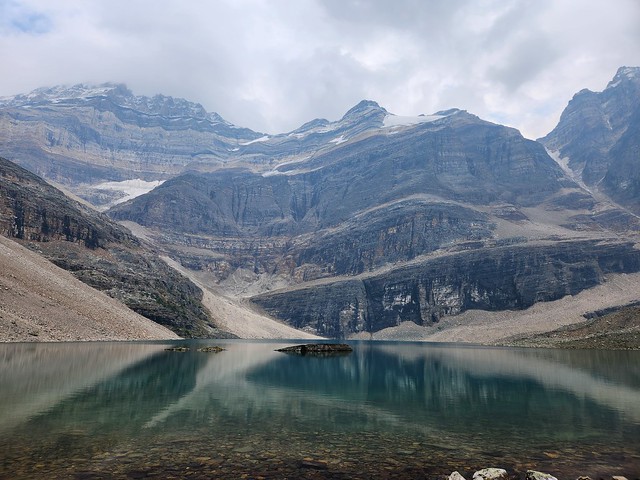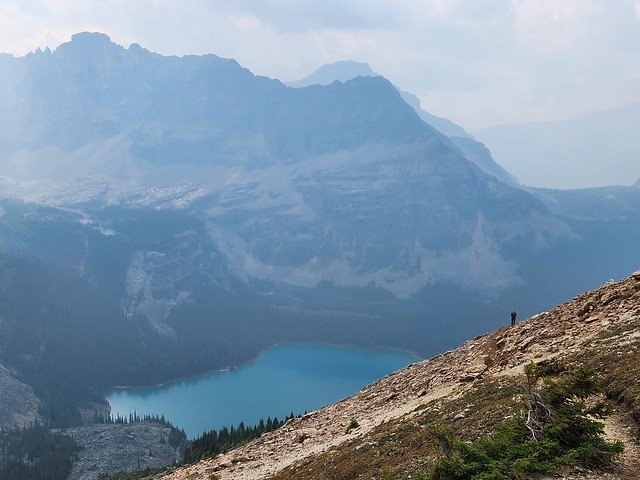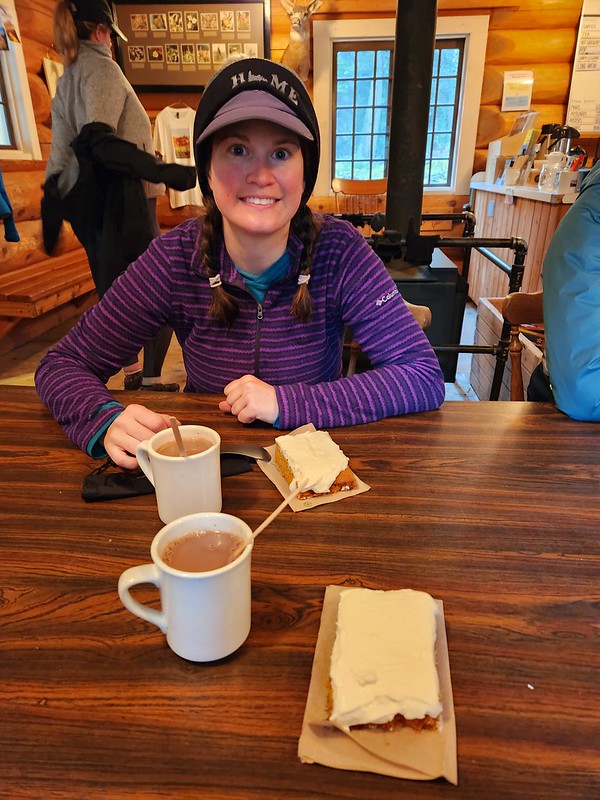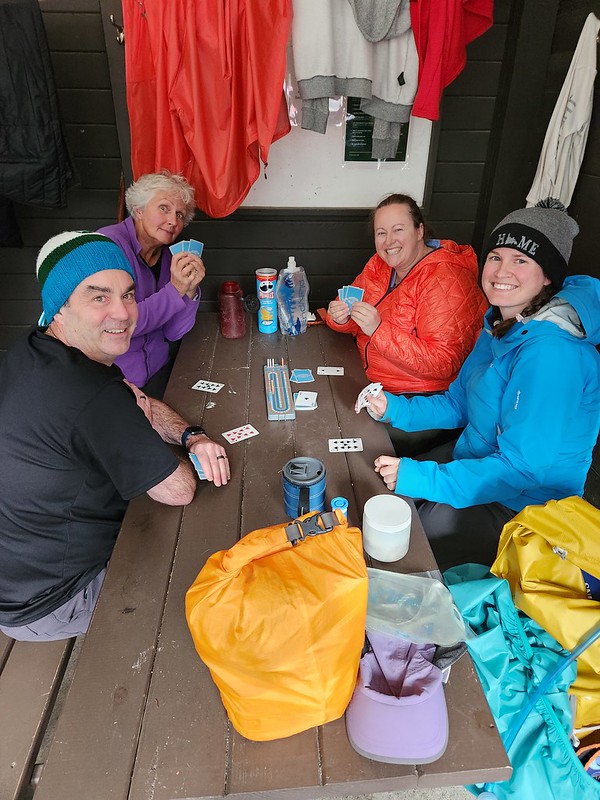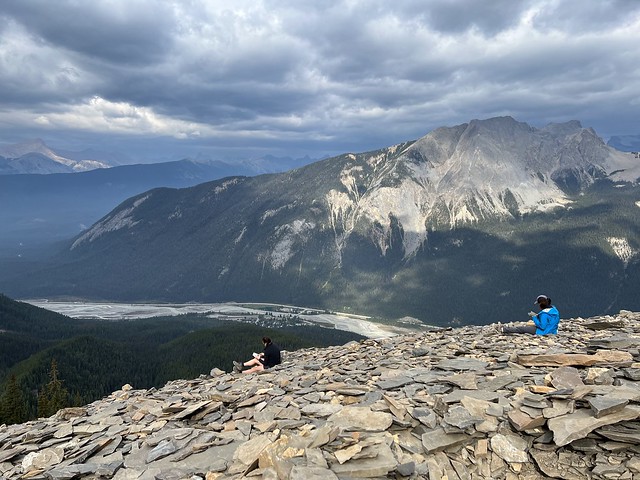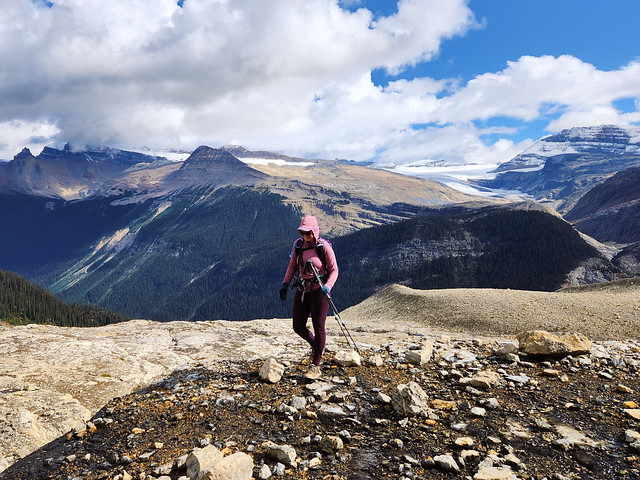In the land of National Parks, Yoho is Banff’s equally stunning, but less popular cousin. It’s been growing a lot in popularity to be sure, and there are specific parts of the park that are very popular, but overall it is overshadowed by Banff and Jasper. I’ve only been exposed to a small part of what this park has to offer, but here’s what I learned in my limited time there.
Getting There
Kootenay National Park is characterized by Highway 1 (aka the Trans Canada Highway), which runs through the entirety of the park, connecting it to both Banff and Calgary, and Golden and the rest of BC. There’s the small town of Field located in the center of the park and the rest is pretty much wilderness. If you’re coming from Calgary, the obvious option is to drive Highway 1 through Banff and on to Yoho. If you’re coming from BC, it’s a 45 minute drive from Golden to Field. No matter how you get there, there’s so much to see in the park!
Where to Stay
Where to stay depends on what kind of sleeping experience you’re looking for. If you’d like to stay in a hotel, you can choose from Field, Lake Louise, Golden, or even Banff. Field is the obvious choice since it’s already located in the park, but there are very limited options in Field, so you’d definitely want to book in advance. If you have a large budget, you could even check out the Fairmont lodge at Emerald Lake, which is incredibly beautiful (and high end). Another nearby option is Lake Louise, which is a 20 minute drive and also has limited hotel options, so I’d personally recommend Golden. It’s 45 minutes away, but there are lots of budget options available and more restaurant selection (and it’s cheaper than Banff).
If you’d like to camp, there will be a lot more options available and you may be able to stay directly in the park. But if you want to be assured a campsite, then you need to be prepared to book sites when they release around March because all of the National Parks are popular and they book up fast. See the next sections for more information on your camping options.
Frontcountry Camping
If you’re new to camping, then frontcountry camping is what you’re looking for. These are drive in sites, so you can store lots of things in your car and they’re much easier to get to than backcountry sites. There are 3 full frontcountry sites and 1 partial frontcountry site – however, only 1 of these sites can be booked through the Parks Canada reservation site, the rest are first-come, first-serve, which can be risky. Check early in the year for the date that sites will be released.
Kicking Horse Campground – This is the largest campground in the park, but it still only has 88 sites, which is small compared to Banff, Jasper, and Kootenay. It’s located near Field and is usually open from late May to early October. This is the only campground with reservable sites.
Monarch Campground – This campground is also located near Field and has 44 first-come, first-serve sites. It is usually open from May to September.
Hoodoo Creek Campground – This campground is located on the edge of the park near Golden, so it is a bit further from the main attractions. It has 30 first-come, first-serve sites and it is usually open from July to September.
Takkakaw Falls Campground – This campground is only partially frontcountry. This means you can’t drive right into your campsite. It’s ~1km walk to get to the sites, so you can still haul in more gear, especially if you want to take a wagon, but you need to practice bear safety because you can’t put all your food and smellies in your car. It has 35 sites and it is usually open from mid June to early October.
Lake Louise Campground – While not in Yoho Park, Lake Louise is a great alternative because it’s only 20 minutes from Field and it has 206 tenting sites and 189 RV sites! So it’s your best bet at securing a reservable site (I got one 2 weeks before my trip) and it has a full shower house.
Backcountry Camping
Backcountry camping is my preferred method of camping, but it is a whole different beast than frontcountry. It revolves around hiking and you have to carry everything you need on your back, so you should only attempt backcountry if you’re aiming to complete a hike.
There’s a few options for backcountry sites in Yoho, these are all reservable online when the sites release around march every year:
Laughing Falls – this campsite is probably the most easily accessible on the list. It’s located 5km from the Takkakaw Falls trailhead and travels along the Yoho River on mostly flat terrain. It’s located next to the Falls with 5 campsites and can be hiked on its own or as part of a circuit on the Iceline Trail or a stopping point on the way to Twin Falls.
Twin Falls – this campsite is located 9km from the Takkakaw Falls trailhead, or 4km from Laughing Falls. It has 5 campsites and from Twin Falls you can either explore the Iceline Trail or continue up to the Wapta Glacier on the Bow Yoho Traverse (advanced hikers only).
Yoho Lake – this campsite also involves ~5km of hiking, but it’s in much steeper terrain than Laughing Falls, so be prepared for more of a challenge. There are 5 sites located on Yoho Lake and it’s a great stopping point from which to explore parts of the Iceline Trail or to complete as a circuit.
Little Yoho Valley – this campsite is located at the midpoint of the Iceline Trail loop, so it’s approximately 10km coming from either side of the loop. It’s at the back of the valley below the Iceline Trail and is the most ideal campsite if you’re doing the full 20km loop.
McArthur Creek – this campsite is located 16km from the highway on the Great Divide Trail. I believe it’s most commonly used by thru hikers on the trail, but you could use it to connect to Helmet Falls and the Rockwall Trail in Kootenay National Park as well.
Lake O’Hara – by far the most popular campsite in the park. There are 30 sites located 1km from iconic Lake O’Hara and the booking includes a ride on the Parks Canada bus into and out of the park. It’s very hard to get bookings for Lake O’Hara, so be prepared as soon as the sites release. See my post on Lake O’Hara for more details on booking.
Backcountry Huts
In addition to the campgrounds, there are several backcountry huts located in the park that can be booked through the ACC. Two of these huts require glacier travel and are for advanced hikers/skiers, so I have not included them. The other two are more easily accessible!
Elizabeth Parker Hut – located near Lake O’Hara, this hut is just as popular as the campground and is one of the ACC’s most accessible huts. It’s only a 500 metre walk from the bus stop, but I’m not sure if your booking includes a seat on the bus, so you may need to book the bus separately or plan to hike 11km up along the road.
Stanley Mitchell Hut – located at the midpoint of the Iceline Trail loop, near Little Yoho Valley campsite. This is a large hut located in the meadows under the Iceline Trail. It can be accessed from 2 directions, both of which are ~10km.
Hiking
There is a lot of hiking available in Yoho National Park and my knowledge on all of these hikes remains limited. I’ve included a brief overview of some of the trails as a starting point, but recommend doing your own research.
Lake O’Hara Alpine Circuit – a 12km breathtaking trail that wraps around Lake O’Hara through the alpine. If you are lucky enough to get a pass on the bus, you can start from the official trailhead, otherwise you will need to hike an additional 11km each way on the road.
Lake McArthur – another trail that starts from Lake O’Hara and requires a bus pass. From the bus stop, it’s an 8km round trip hike up to this gorgeous alpine lake. There are lots of branches on this trail, so it is possible to turn it into a loop trail. Add 11km each way for the road if you don’t have a bus pass.
Linda Lake – a 10km trail that runs from the Lake O’Hara campground. It was recommended to me as an alternative hike to the alpine circuit on a rainy day, so I’m assuming it’s mostly forested. Add 11km each way for the road if you don’t have a bus pass.
Odaray Highline – only 4 groups per day are permitted on this trail to protect the wildlife corridor, which is managed through a self-registration system at the trailhead. It’s approximately 8km from the Lake O’Hara bus stop. Add 11km each way for the road if you don’t have a bus pass.
Iceline Trail – a 20km loop trail that leaves from Takkakaw Falls and climbs up to the alpine. Hike alongside glaciers for 6km at the top of the trail before descending down to the meadows in Yoho Valley and then continuing through the forest along the river back to the parking lot.
Twin Falls Trail – the trail varies between 16km and 20km depending on your route. Leave from the Takkakaw Falls parking lot and go directly to the falls or do a loop through the campground. Be prepared for a steep climb up to the Falls.
Emerald Basin – a customizable hike up to 9km in length and mostly flat. It leaves from the Emerald Lake parking lot. Just hike around the lake for a shorter hike or add the basin at the back of the lake to do the full loop.
Hamilton Lake – an 11km round trip hike that also leaves from Emerald Lake and hikes up a steep forested trail past Hamilton Falls and up to the lake.
Mount Stephen (Burgess Shale) – this 8km hike can only be completed on a guided tour as it travels to the protected Burgess Shale fossil quarry. It’s extremely steep, but highly recommended!
Walcott Quarry (Burgess Shale) – this 20km hike can only be completed on a guided tour as it travels to the protected Burgess Shale fossil quarry. It’s a longer hike than Mount Stephen, but a much more gentle incline.
Sherbrooke Lake – a 6km round trip hike up to Sherbrooke Lake that leaves from the parking lot at Wapta Lake. The hike starts with an uphill climb and flattens out along the lake.
Paget Lookout – a 7km round trip hike that branches off the Sherbrooke Lake trail to hike up to a viewpoint. While not a long hike, it is very steep.
Hoodoo Creek – a 5km round trip hike located near the Hoodoo campground. A short but steep hike to view the hoodoos.
Mount Hunter – this trail can be customized to either 7km or 12km round trip. It’s located just before Hoodoo Creek and is completing uphill. Stop at the first lookout for a shorter hike, or continue all the way to the top.
National Park Pass
Before visiting, make sure to get your park pass online or by stopping into the visitor centre in Field. Your other options are to pick it up at the kiosk when you enter Banff, or stop in Rogers Pass when you drive through Glacier National Park. You will need it to park everywhere inside the park. It’s $10 per person, per day, or you can get the family pass for the whole year for $145, which is applicable to all National Parks in Canada.
